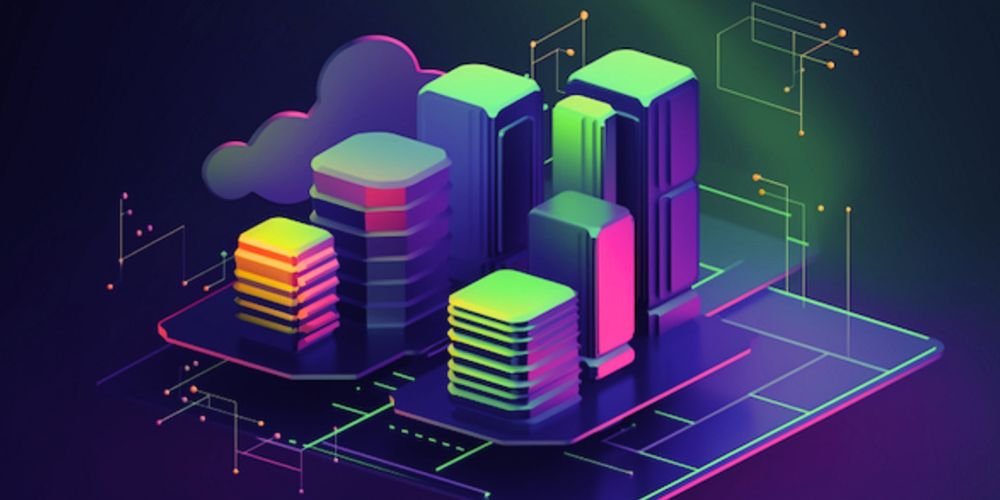Containerization has emerged as a groundbreaking technology in software development and deployment, offering unprecedented efficiency, scalability, and flexibility. This comprehensive guide explores the principles, key components, benefits, challenges, and future trends of containerization, underscoring its transformative impact on modern IT infrastructure.
Understanding Containerization
Containerization refers to encapsulating software code and its dependencies into isolated, lightweight containers that can run consistently across different computing environments. This technology streamlines application development, testing, and deployment, ensuring seamless functionality regardless of the underlying infrastructure.
What is a Container?
A container is a standardized unit of software that packages code and all its dependencies. It enables the application to run fast and reliably from one computing environment to another. Containers isolate the software from its environment, allowing it to operate uniformly and consistently across various platforms.
Containerization vs. Virtualization
While both containerization and virtualization involve the abstraction of resources, they differ significantly. Virtualization involves creating virtual machines (VMs) with a complete operating system, whereas containerization involves running multiple isolated applications on a single operating system kernel. Containers are more lightweight and efficient than VMs, offering faster start-up times and reduced resource consumption.
History and Evolution of Containerization
The concept of containerization dates back to the early 2000s when technologies like FreeBSD Jails and Solaris Zones were introduced. However, it gained mainstream popularity with the introduction of Docker in 2013. Docker standardized the container format, making it easier for developers to create, deploy, and manage containers, thus revolutionizing software development and deployment practices.
Key Components of Containerization
Containerization relies on several critical components to function effectively and deliver its numerous benefits.
Container Runtime
The container runtime software is reliable for running containers on a host system. It manages container lifecycle operations, including creating, starting, stopping, and deleting containers. Popular container runtimes include Docker Engine, containers, and CRI-O, each offering different features and performance optimizations.
Container Orchestration
Container orchestration involves managing containers’ deployment, scaling, and operation across a cluster of machines. Tools like Kubernetes, Docker Swarm, and Apache Mesos automate these processes, ensuring high availability, fault tolerance, and efficient resource utilization. Orchestration platforms are essential for managing large-scale containerized applications in production environments.
Container Registries
Container registries are repositories where container images are stored, managed, and distributed. These registries enable developers to share and deploy container images across different environments. Public registries like Docker Hub and private registries like Azure Container Registry and Google Container Registry provide secure and scalable storage solutions for container images.
Benefits of Containerization
Containerization offers numerous advantages that drive its widespread adoption across various industries.
Consistency and Portability
Containers ensure consistency across different computing environments by encapsulating all dependencies and configurations within the container. This portability allows developers to build, test, and deploy applications seamlessly across development, testing, and production environments without compatibility issues.
Resource Efficiency
Containers are lightweight compared to virtual machines, allowing for higher density on a single host system. This resource efficiency reduces hardware and operational costs, as more applications can be run on fewer servers. Containers also start up faster than VMs, improving application responsiveness and reducing downtime.
Scalability and Flexibility
Containerization enhances scalability and flexibility by enabling dynamic resource allocation and management. Container orchestration tools like Kubernetes can automatically scale applications up or down based on demand, ensuring optimal performance and resource utilization. This flexibility supports rapid application development and deployment, enabling companies to respond fast to changing market conditions.
Challenges of Containerization
Despite its many benefits, containerization presents several challenges that institutions must address to ensure successful implementation and operation.
Security Concerns
Container security is a critical challenge, as attackers can exploit vulnerabilities in container images or the underlying host system. Implementing robust safety measures, such as regular vulnerability scanning, image signing, and runtime security monitoring, is essential to protecting containerized environments from potential threats.
Complexity in Management
Managing large-scale containerized environments can be complex, particularly when dealing with multiple orchestration tools, container runtimes, and networking configurations. Organizations need skilled personnel and comprehensive management solutions to effectively handle the intricacies of container orchestration, monitoring, and maintenance.
Storage and Data Management
Persistent storage and data management in containerized environments can be challenging. Containers are temporary, and ensuring data persistence and consistency across container restarts and migrations requires careful planning. Solutions like Kubernetes Persistent Volumes and storage plugins help address these challenges by providing mechanisms for persistent storage management.
Future Trends in Containerization
The future of containerization is shaped by emerging technologies and evolving business needs, promising further advancements and innovations.
Serverless Architectures
Serverless computing, or Function-as-a-Service (FaaS), abstracts the underlying infrastructure, allowing developers to focus solely on code execution. Containerization technologies are evolving to support serverless architectures, providing the scalability and flexibility needed for on-demand resource allocation and seamless application deployment.
Enhanced AI and Machine Learning Integration
Integrating AI and machine learning with containerization technologies is poised to enhance automation, optimization, and predictive analytics. AI-driven container management tools can dynamically allocate resources, predict workloads, and identify potential issues before they impact performance, driving efficiency and reducing operational overhead.
Edge Computing
Edge computing is set to transform containerization by bringing computing resources closer to the data source. Containerization at the edge enables real-time processing, reduced latency, and improved performance for applications like IoT and AI. This shift supports the growing demand for responsive and localized computing solutions.
Conclusion
Containerization is a transformative technology that has revolutionized software development and deployment by enabling efficient resource utilization, enhancing flexibility, and improving scalability. Despite the security, management complexity, and storage challenges, containerization continues to evolve, driven by emerging trends such as serverless architectures, AI integration, and edge computing. As organizations navigate the digital landscape, containerization remains a critical enabler of innovation, scalability, and operational excellence, shaping the future of IT and beyond.












